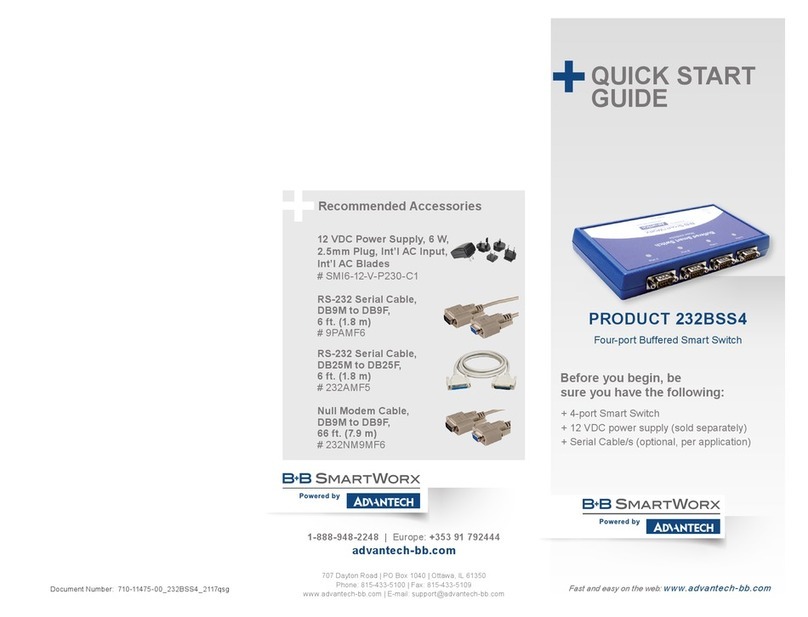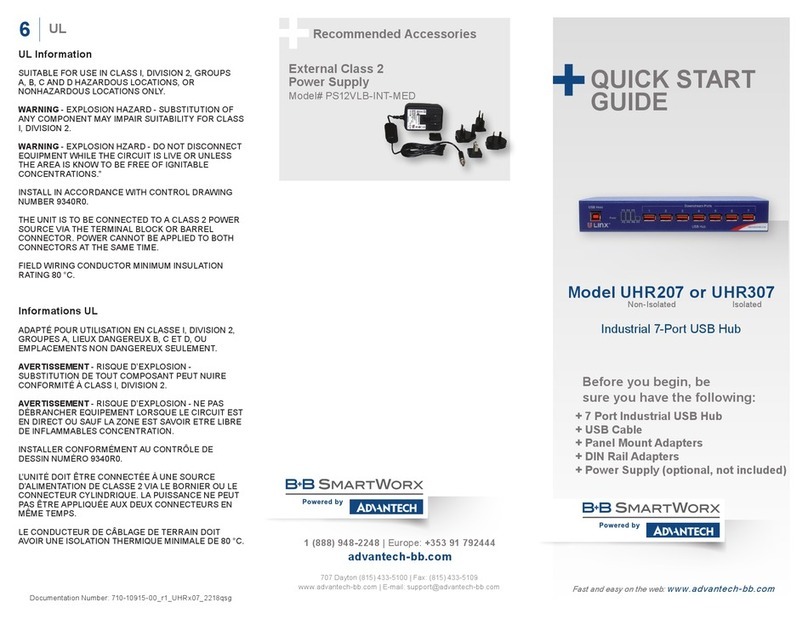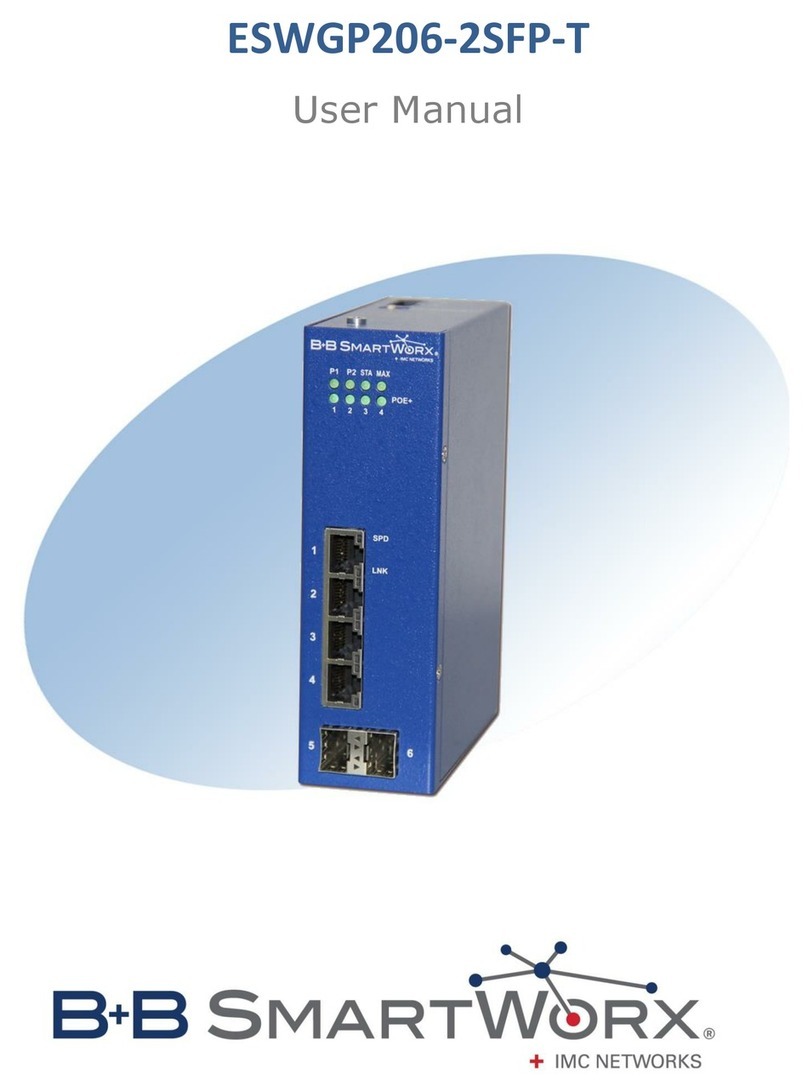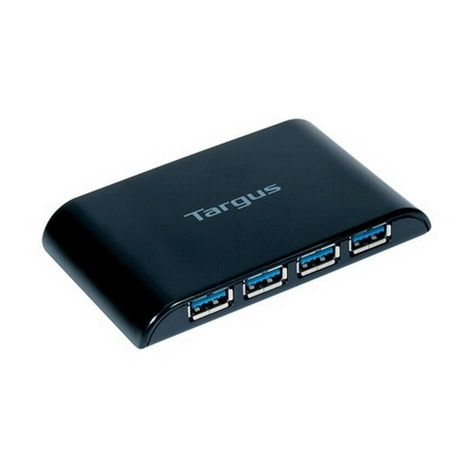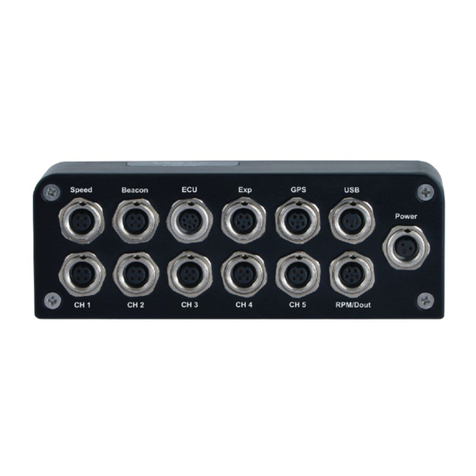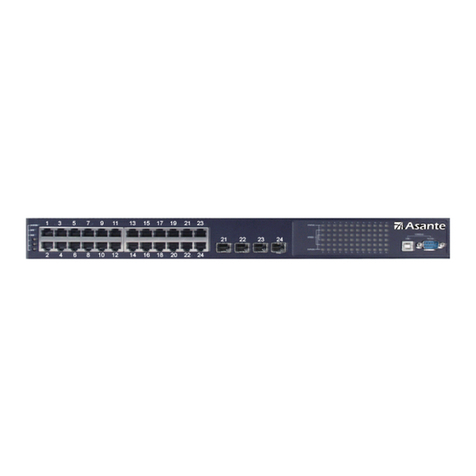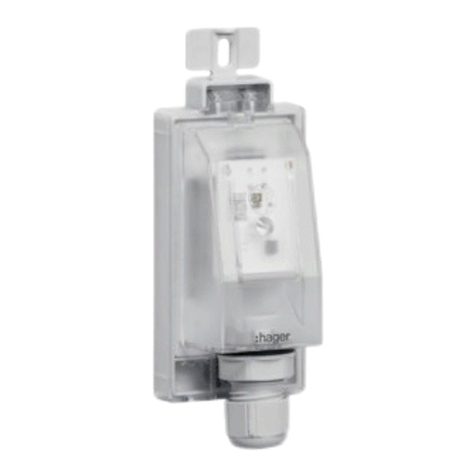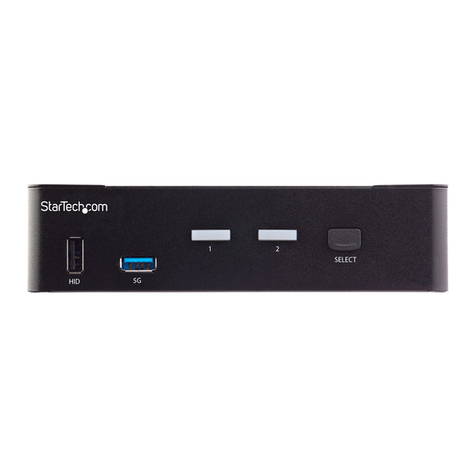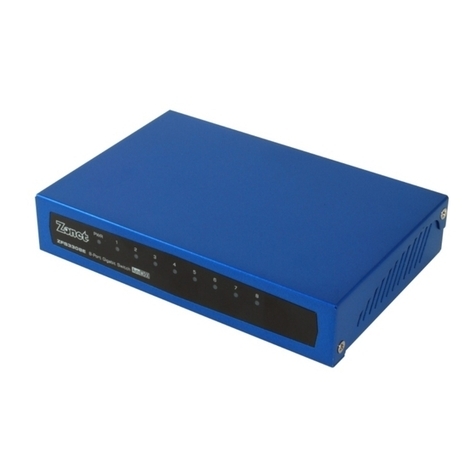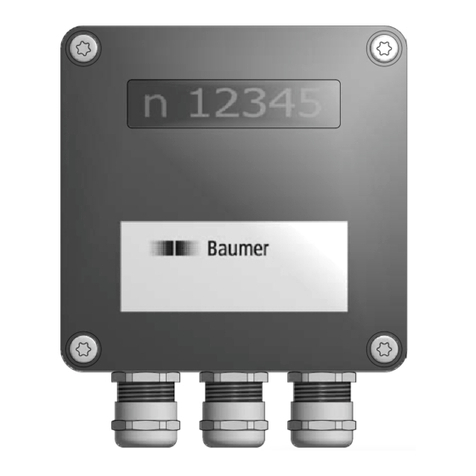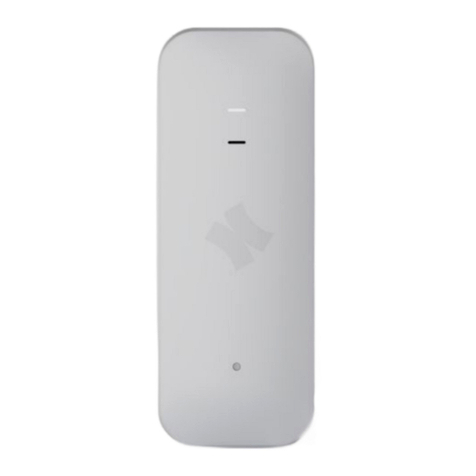B+B SmartWorx SEG510-2SFP-T User manual

SE500 Series
CLI
USER MANUAL

ii
CLI
Advantech B+B SmartWorx - Americas
707 Dayton Road
Ottawa, IL 61350 USA
Phone (815) 433-5100
Fax (815) 433-5105
Advantech B+B SmartWorx - European Headquarters
Westlink Commercial Park
Oranmore, Co. Galway, Ireland
Phone +353 91-792444
Fax +353 91-792445
www.advantech-bb.com
Document: CLI_R0_xx15m

iii
CLI
Acknowledgements
Intel and Pentium are trademarks of Intel Corporation.
Microsoft Windows and MS-DOS are registered trademarks of Microsoft Corp.
All other product names or trademarks are properties of their respective owners.
Supported Models
The user manual is only available for the following models:
Table 1: Supported Models
SEG510-2SFP-T SEG512-4SFP-T SEG520-4SFP-T
SEG528-4SFP-T SEG610-2SFP-T SEG612-4SFP-T
SEG620-4SFP-T SEG628-4SFP-T

iv
CLI
Technical Support and Assistance
1. Visit the Advantech web site at www.advantech.com/support where you can find the lat-
est information about the product.
2. Contact your distributor, sales representative, or Advantech's customer service center for
technical support if you need additional assistance. Please have the following informa-
tion ready before you call:
– Product name and serial number
– Description of your peripheral attachments
– Description of your software (operating system, version, application software, etc.)
– A complete description of the problem
– The exact wording of any error messages
Warnings, Cautions and Notes
Document Feedback
To assist us in making improvements to this manual, we would welcome comments and con-
Warning! Warnings indicate conditions, which if not observed, can cause personal injury!
Caution! Cautions are included to help you avoid damaging hardware or losing data. e.g.
There is a danger of a new battery exploding if it is incorrectly installed. Do not
attempt to recharge, force open, or heat the battery. Replace the battery only
with the same or equivalent type recommended by the manufacturer. Discard
used batteries according to the manufacturer's instructions.
Note! Notes provide optional additional information.

v
INDUSTRIAL PROTOCOLS
Command Line Interface ............................................. 1
Using the Command-Line Interface.................................................................................................1
Initially Configuring a Device ....................................................................................................1
Understanding Command Syntax............................................................................................. 1
Understanding Admin and User Accounts................................................................................ 2
Understanding Enable and Enable Secret Passwords............................................................. 2
Abbreviating Commands .......................................................................................................... 2
Using Aliases for CLI Commands............................................................................................. 3
L2 Features...................................................................................................................................... 3
Port Configuration..................................................................................................................... 3
MAC Address Table.................................................................................................................. 4
Jumbo Frame............................................................................................................................ 5
Flow Control..............................................................................................................................5
Spanning Tree.......................................................................................................................... 6
VLAN ........................................................................................................................................ 9
Q-in-Q.....................................................................................................................................11
Link Aggregation..................................................................................................................... 12
GARP...................................................................................................................................... 13
GVRP...................................................................................................................................... 13
Port Mirror...............................................................................................................................14
LLDP....................................................................................................................................... 14
Multicast......................................................................................................................................... 16
IGMP Snooping ...................................................................................................................... 16
MLD Snooping........................................................................................................................19
Redundancy................................................................................................................................... 22
X-Ring..................................................................................................................................... 22
QoS................................................................................................................................................23
Rate Limit................................................................................................................................23
QoS......................................................................................................................................... 23
Security.......................................................................................................................................... 25
Loop Detection / Prevention ................................................................................................... 25
Storm Control.......................................................................................................................... 25
Port Security........................................................................................................................... 26
802.1X ....................................................................................................................................27
Remote Authentication ...........................................................................................................27
One Time Password...............................................................................................................28
Account Manager.................................................................................................................... 28
DoS Attack Prevention............................................................................................................29
IP Security .............................................................................................................................. 29
Management.................................................................................................................................. 30
IP Management ...................................................................................................................... 30
SNMP .....................................................................................................................................31
Configuration Management .................................................................................................... 32
Firmware Management........................................................................................................... 33
DHCP Server..........................................................................................................................33
DHCP Client ........................................................................................................................... 34
System Log (SYSLOG)...........................................................................................................35
System Time...........................................................................................................................35
SMTP......................................................................................................................................37
NTP Server.............................................................................................................................37
RMON..................................................................................................................................... 38
IP Configuration......................................................................................................................39
TELNET.................................................................................................................................. 40
CONTENTS

vi
INDUSTRIAL PROTOCOLS
SSH ........................................................................................................................................ 40
HTTP ......................................................................................................................................40
Modbus TCP...........................................................................................................................41
IXM ......................................................................................................................................... 41
Diagnostic...................................................................................................................................... 42
Cable Diagnostic.....................................................................................................................42
DMI......................................................................................................................................... 42
IP-based Diagnostic................................................................................................................43
PoE......................................................................................................................................... 43
LED......................................................................................................................................... 45
System.................................................................................................................................... 45

vii
INDUSTRIAL PROTOCOLS
Table 1: Supported Models ..............................................................................................................iii
Table 2: Account Management Commands..................................................................................... 2
Table 3: Default Command Aliases.................................................................................................. 3
Table 4: Port Configuration............................................................................................................... 3
Table 5: MAC Address Table ........................................................................................................... 4
Table 6: Jumbo Frame ..................................................................................................................... 5
Table 7: Flow Control ....................................................................................................................... 5
Table 8: Spanning Tree.................................................................................................................... 6
Table 9: VLAN..................................................................................................................................9
Table 10: Q-in-Q............................................................................................................................... 11
Table 11: Link Aggregation...............................................................................................................12
Table 12: GARP ............................................................................................................................... 13
Table 13: GVRP ............................................................................................................................... 13
Table 14: GVRP ............................................................................................................................... 14
Table 15: LLDP................................................................................................................................. 14
Table 16: IGMP Snooping................................................................................................................ 16
Table 17: MLD Snooping..................................................................................................................19
Table 18: X-Ring............................................................................................................................... 22
Table 19: Rate Limit ......................................................................................................................... 23
Table 20: QoS ..................................................................................................................................23
Table 21: Loop Detection / Prevention .............................................................................................25
Table 22: Storm Control ................................................................................................................... 25
Table 23: Port Security..................................................................................................................... 26
Table 24: 802.1X..............................................................................................................................27
Table 25: Remote Authentication ..................................................................................................... 27
Table 26: One Time Password.........................................................................................................28
Table 27: Account Manager ............................................................................................................. 28
Table 28: DoS Attack Prevention .....................................................................................................29
Table 29: IP Security........................................................................................................................29
Table 30: IP Management................................................................................................................ 30
Table 31: SNMP............................................................................................................................... 31
Table 32: Configuration Management.............................................................................................. 32
Table 33: Firmware Management.....................................................................................................33
Table 34: DHCP Server.................................................................................................................... 33
Table 35: DHCP Client..................................................................................................................... 34
Table 36: System Log (SYSLOG) ....................................................................................................35
Table 37: System Time..................................................................................................................... 35
Table 38: SMTP................................................................................................................................ 37
Table 39: NTP Server....................................................................................................................... 37
Table 40: RMON............................................................................................................................... 38
Table 41: IP Configuration................................................................................................................39
Table 42: TELNET............................................................................................................................40
Table 43: SSH.................................................................................................................................. 40
Table 44: HTTP................................................................................................................................40
Table 45: Modbus TCP..................................................................................................................... 41
Table 46: IXM................................................................................................................................... 41
Table 47: Cable Diagnostic ..............................................................................................................42
Table 48: DMI................................................................................................................................... 42
Table 49: IP-based Diagnostic .........................................................................................................43
Table 50: PoE................................................................................................................................... 43
Table 51: LED................................................................................................................................... 45
Table 52: System.............................................................................................................................. 45
LIST OF TABLES

1
CLI
Using the Command-Line Interface
The Advantech IOS command-line interface (CLI) is the primary user interface used to config-
ure, monitor, and maintain Advantech devices. The user interface allows you to directly exe-
cute CLI commands. Note that all CLI options are also available via the web browser
interface.
This chapter describes the basic features of the Advantech IOS CLI and how to use them.
Topics covered include the following:
Layer 2 features
Multicast
IGMP Snooping
MLD Snooping
Redundancy
QoS
Security
Management
Diagnostic
The initial configuration of a device varies by device. This document provides configuration
information for the listed devices.
After initially configuring and connecting the device to the network, you can configure the
device by using the remote access method, such as Telnet or Secure Shell (SSH), to access
the CLI or by using the configuration method provided on the device, such as Security Device
Manager.
The command syntax is the format used for entering CLI commands. The commands are
derived from the use of the command, keywords, and arguments. The keywords are alphanu-
meric strings used literally, while arguments are used as placeholders for required values.
COMMAND LINE INTERFACE
Initially Configuring a Device
Understanding Command Syntax

2
CLI
Two levels of account privilege are available, admin (for system administrators), and user (for
general users). An admin account is required to add additional accounts and assign account
privileges. The following table displays the account management commands used to create
and edit admin and user accounts.
Some privileged EXEC commands are used for actions that impact the system, and it is rec-
ommended that you set a password for these commands to prevent unauthorized use. Two
types of passwords, enable (not encrypted) and enable secret (encrypted), can be set.
The following commands set these passwords and are issued in global configuration mode:
enable password
enable secret password
Typing a complete command name is not always required for the command to execute. The
CLI recognizes an abbreviated command when the abbreviation contains enough characters
to uniquely identify the command. For example, the show version command can be abbrevi-
ated as sh ver. It cannot be abbreviated as s ver because s could mean show, set, or systat.
The sh v abbreviation also is not valid because the show command has vrrp as a keyword in
addition to version. (Command and keyword examples are from Cisco IOS Release
12.4(13)T.)
Understanding Admin and User Accounts
Table 2: Account Management Commands
Account Manager
show username User EXEC Show all user accounts in
local database. Switch# show username
show privilege User EXEC Show current privilege
level. Switch# show privilege
username WORD<0-
32> [privilege
(admin|user)] (pass-
word WORD<0-32>) | (
secret [encrypted]
WORD<0-32>) |
nopassword
Admin EXEC Use "username" command
to add a new user account
or edit an existing user
account.
switch(config)# username test
privilege admin secret 1234
no username WORD<0-
32> Admin EXEC Delete an existing user
account. switch(config)# no username
test
enable (password |
(secret [encrypted]))
PASSWORD
Admin EXEC Edit password for each priv-
ilege level for enable
authentication.
switch(config)# enable secret
1234
no enable Admin EXEC Restoreenablepasswordto
default empty value. switch(config)# no enable
Understanding Enable and Enable Secret Passwords
Abbreviating Commands

3
CLI
To save time and the repetition of entering the same command multiple times, you can use a
command alias. An alias can be configured to do anything that can be done at the command
line, but an alias cannot move between modes, type in passwords, or perform any interactive
functions.
Table 3 shows the default command aliases.
L2 Features
Using Aliases for CLI Commands
Table 3: Default Command Aliases
Command Alias Original Command
hhelp
lo logout
Pping
sshow
u or un undebug
wwhere
Port Configuration
Table 4: Port Configuration
Function Privilege Description Example
[no] shutdown Admin EXEC Use "shutdown" command
to disable port and use "no
shutdown" to enable port. If
port is error disabled for any
reason, use "no shutdown"
command to recover the
port manually.
This example shows how to
modify port duplex configura-
tion.
switch(config)# interface fa1
switch(config-if)# shutdown"
speed (10|100) Admin EXEC Use "speed" command to
change port speed configu-
ration. The speed is only
able to configure to the
physical maximum speed.
For example, in fast Ether-
net port, speed 1000 is not
available.
This example shows how to
modify port speed configura-
tion.
switch(config)# interface fa2
switch(config-if)# speed auto
10/100
speed (1000|) Admin EXEC
speed auto [(10|100|10/
100)] Admin EXEC
speed auto [(1000|)] Admin EXEC
duplex (auto|full|half) Admin EXEC Use "duplex" command to
change port duplex configu-
ration.
This example shows how to
modify port duplex configura-
tion.
switch(config)# interface fa1
switch(config-if)# duplex full
switch(config-if)# exit
switch(config)# interface fa2
switch(config-if)# duplex half

4
CLI
description WORD<1-"
SYS_STR_CONST(SY
S_PORTDESC_STR_L
EN) ">
Admin EXEC Use "description" com-
mand to give the port a
name to identify it easily.
If description includes
spacecharacter,pleaseuse
double quotes to wrap it.
This example shows how to
modify port descriptions.
switch(config)# interface fa2
switch(config-if)# description
"uplink port"
no description Admin EXEC Use no form to restore
description to empty string.
[no] protected Admin EXEC Use "protected" command
to protect port. Protected
port is only allowed to com-
municate with unprotected
port. In other words, pro-
tected port is not allowed to
communicate with another
protected port.
Use no form to make port
unprotected
This example shows how to
configure ports fa1 and fa2 as
protected ports.
switch(config)# interface range
fa1-2
switch(config-if-range)# pro-
tected
MAC Address Table
Table 5: MAC Address Table
Function Privilege Description Example
show mac address-table
aging-time User EXEC View the aging time of the
address table. switch# show mac address-
table aging-time
show mac address-table
A:B:C:D:E:F [vlan <1-
4094>]
User EXEC Displays entries for a spe-
cific MAC address (for all or
VLAN).
switch# show mac address-
table 0:1:2:3:4:5 vlan 1
show mac address-table
[vlan <1-4094>] [inter-
faces IF_PORTS]
User EXEC View MAC entry on speci-
fied interface or VLAN or all
dynamic MAC entries in
MAC address table.
switch# show mac address-
table vlan 1 interface fa5
show mac address-table
static [vlan <1-4094>]
[interfaces IF_PORTS]
User EXEC View static MAC entry on
specified interface or VLAN
or all dynamic MAC entries
in MAC address table.
switch# show mac address-
table static vlan 1 interface fa5
show mac address-table
dynamic[vlan<1-4094>]
[interfaces IF_PORTS]
User EXEC View dynamic MACentryon
specified interface or VLAN
or all dynamic MAC entries
in MAC address table.
switch# show mac address-
table dynamic vlan 1 interface
fa5
show mac address-table
counters User EXEC Display the number of
addresses present in MAC
address table.
switch# show mac address-
table counters
clear mac address-table
dynamic [interfaces
IF_PORTS]
Admin EXEC Delete dynamic MAC entry
on specified interface or all
dynamic MAC entries in
MAC address table.
switch(config)# clear mac
address-table dynamic inter-
faces fa5
clear mac address-table
dynamic vlan <1-4094> Admin EXEC Delete dynamic MAC entry
on specified VLAN dynamic
MAC entry in MAC address
table.
switch(config)# clear mac
address-table dynamic vlan 1
Table 4: Port Configuration (Continued)
Function Privilege Description Example

5
CLI
mac address-table
aging-time <10-630> Admin EXEC Set the aging time of the
address table. switch(config)# mac address-
table aging-time 300
mac address-table static
A:B:C:D:E:F vlan <1-
4094> interfaces
IF_PORTS
Admin EXEC Add static addresses to the
MAC address table. switch(config)# mac address-
table static 0:1:2:3:4:5 vlan 1
interfaces fa5
no mac address-table
static A:B:C:D:E:F vlan
<1-4094>
Admin EXEC Delete static addresses
from the MAC address
table.
switch(config)# no mac
address-table static 0:1:2:3:4:5
vlan 1 interfaces fa5
Jumbo Frame
Table 6: Jumbo Frame
Function Privilege Description Example
jumbo-frame <1518-
9216> Admin EXEC Use "jumbo-frame" com-
mand to modify maximum
frame size.
The only way to show this
configuration is by using
"show running-config" com-
mand.
This example shows how to
modify maximum frame size to
9216 bytes.
switch(config)# jumbo-frame
9216
no jumbo-frame Admin EXEC Use no form to disable
jumbo-frame. switch(config)# no jumbo-
frame
Flow Control
Table 7: Flow Control
Function Privilege Description Example
[no] back-pressure Admin EXEC Use "back-pressure" com-
mand to change port back-
pressure configuration.
Use no form to restore
back-pressure to default
(off) configuration.
This example shows how to
modify port duplex configura-
tion.
switch(config)# interface fa1
switch(config-if)# back-pres-
sure
switch(config-if)# no back-
pressure
flowcontrol (off|on) Admin EXEC Use "flow-control" com-
mand to change port flow
control configuration.
Use off form to restore flow
control to default (off) con-
figuration.
This example shows how to
modify port duplex configura-
tion.
switch(config)# interface fa1
switch(config-if)# flow-control
on
switch(config-if)# flow-control
off
Table 5: MAC Address Table (Continued)
Function Privilege Description Example

6
CLI
Spanning Tree
Table 8: Spanning Tree
Function Privilege Description Example
show spanning-tree
[instance <0-15>] User EXEC Show spanning-tree
instance information. switch# show spanning-tree
instance 10
show spanning-tree
interfaces IF_PORTS
[instance <0-15>]
User EXEC Show spanning-tree
instance information per
port.
switch# show spanning-tree
interface gi1 instance 10
show spanning-tree User EXEC Show spanning-tree infor-
mation. switch# show spanning-tree
show spanning-tree
interfaces IF_PORTS User EXEC Showspanning-treestateof
one port. switch# show spanning-tree
interface gi1
show spanning-tree
interfaces IF_PORTS
statistic
User EXEC Show spanning-tree statis-
tics of one port. switch# show spanning-tree
interface gi1 statistic
[no] spanning-tree Admin EXEC Enable or Disable Span-
ning-Tree Protocol. switch# configure
switch(config)# spanning-tree
switch(config)# exit
spanning-tree bpdu (fil-
tering|flooding) Admin EXEC Specify the forwarding
action of BPDU to filtering
or flooding.
switch# configure
switch(config)# spanning-tree
bpdu filtering
switch(config)# exit
no spanning-tree bpdu Admin EXEC Restore to default BDPU
action. Default action is
flooding.
switch# configure
switch(config)# no spanning-
tree bpdu
switch(config)# exit"
spanning-tree mode
(stp|rstp|mstp) Admin EXEC Specify the mode to Span-
ning Tree Protocol.
Specify the mode to Rapid
Spanning Tree Protocol.
Specify the mode to Multi-
ple Spanning Tree Protocol.
switch# configure
switch(config)# spanning-tree
mode stp
switch(config)# exit
no spanning-tree force-
version Admin EXEC Restore to default stp ver-
sion. Default stp version is
rstp.
switch# configure
switch(config)# no spanning-
tree force-version
switch(config)# exit
spanning-tree priority
<0-61440> Admin EXEC Specify the bridge priority;
must use multiples of 4096. switch# configure
switch(config)# spanning-tree
priority 16384
switch(config)# exit
no spanning-tree priority Admin EXEC Restore to default priority.
Default priority is 32768. switch# configure
switch(config)# no spanning-
tree priority
switch(config)# exit
spanning-tree hello-time
<1-10> Admin EXEC Specify the hello-time inter-
val (seconds). switch# configure
switch(config)# spanning-tree
hello-time 5
switch(config)# exit

7
CLI
no spanning-tree hello-
time Admin EXEC Restore to default hello-
time. Default hello-time is 2. switch# configure
switch(config)# no spanning-
tree hello-time
switch(config)# exit
spanning-tree forward-
delay <4-30> Admin EXEC Specify the forward-delay
interval (seconds). switch# configure
switch(config)# spanning-tree
forward-delay 30
switch(config)# exit
no spanning-tree for-
ward-delay Admin EXEC Restore to default forward-
delay.Defaultforward-delay
is 15.
switch# configure
switch(config)# no spanning-
tree forward-delay
switch(config)# exit
spanning-tree maxi-
mum-age <6-40> Admin EXEC Specify the maximum-age
time (seconds). switch# configure
switch(config)# spanning-tree
maximum-age 10
switch(config)# exit
no spanning-tree maxi-
mum-age Admin EXEC Restore to default maxi-
mum-age. Default maxi-
mum-age is 20.
switch# configure
switch(config)# no spanning-
tree maximum-age
switch(config)# exit
spanning-tree tx-hold-
count <1-10> Admin EXEC Specify the tx-hold-count
value. switch# configure
switch(config)# spanning-tree
tx-hold-count 10
switch(config)# exit
no spanning-tree tx-
hold-count Admin EXEC Restore to default tx-hold-
count. Default tx-hold-count
is 6.
switch# configure
switch(config)# no spanning-
tree tx-hold-count
switch(config)# exit
spanning-tree pathcost
method (long|short) Admin EXEC Specify the type of pathcost
value as 32 bits (long).
Specify the type of pathcost
value as 16 bits (short).
switch# configure
switch(config)# spanning-tree
pathcost method short
switch(config)# exit
[no] spanning-tree Admin EXEC Enable or Disable Span-
ning-Tree Protocol per port. switch# configure
switch(config)# interface gi1
switch(config-if)# spanning-
tree
switch(config-if)# exit
switch(config)# exit
spanning-tree port-prior-
ity <0-240> Admin EXEC Specify the STP port prior-
ity; must use multiples of
16.
switch# configure
switch(config)# interface gi1
switch(config-if)# spanning-
tree port-priority 64
switch(config-if)# exit
switch(config)# exit
no spanning-tree port-
priority Admin EXEC Restore to default port-pri-
ority. Default port-priority is
128.
switch# configure
switch(config)# interface gi1
switch(config-if)# no spanning-
tree port-priority
switch(config-if)# exit
switch(config)# exit
Table 8: Spanning Tree (Continued)
Function Privilege Description Example

8
CLI
spanning-tree cost long
<0-200000000> Admin EXEC Specify the STP port cost.
In long pathcost method,
the range is from 0 to
20000000. (0 = Auto)
switch# configure
switch(config)# interface gi1
switch(config-if)# spanning-
tree cost long 200000
switch(config-if)# exit
switch(config)# exit
spanning-tree cost short
<0-65535> Admin EXEC Specify the STP port cost.
In short pathcost method,
the range is from 0 to
65535. (0 = Auto).
switch# configure
switch(config)# interface gi1
switch(config-if)# spanning-
tree cost short 1000
switch(config-if)# exit
switch(config)# exit
no spanning-tree cost Admin EXEC Restore to default cost per
port. Default cost is 0. switch# configure
switch(config)# interface gi1
switch(config-if)# no spanning-
tree cost
switch(config-if)# exit
switch(config)# exit
[no] spanning-tree edge Admin EXEC Enable or Disable Span-
ning-Tree edge. switch# configure
switch(config)# interface gi1
switch(config-if)# spanning-
tree edge
switch(config-if)# exit
switch(config)# exit
spanning-tree link-type
point-to-point Admin EXEC Specify the STP port link-
type to point-to-point. switch# configure
switch(config)# interface gi1
switch(config-if)# spanning-
tree link-type point-to-point
switch(config-if)# exit
switch(config)# exit
no spanning-tree link-
type point-to-point Admin EXEC Disable the STP port link-
type from point-to-point. switch# configure
switch(config)# interface gi1
switch(config-if)# no spanning-
tree link-type point-to-point
switch(config-if)# exit
switch(config)# exit
spanning-tree mcheck Admin EXEC Specify the STP port to
migrate port. switch# configure
switch(config)# interface gi1
switch(config-if)# spanning-
tree mcheck
switch(config-if)# exit
switch(config)# exit
spanning-tree mst-con-
fig-id revision-level
LEVEL<0-65535>
Admin EXEC Specify the MSTP mst-con-
fig-id revision level. switch# configure
switch(config)# spanning-tree
mst-config-id revision-level 100
switch(config)# exit
spanning-tree mst-con-
fig-id name NAME<32> Admin EXEC Specify the MSTP mst-con-
fig-id name. switch# configure
switch(config)# spanning-tree
mst-config-id name MST1
switch(config)# exit
Table 8: Spanning Tree (Continued)
Function Privilege Description Example

9
CLI
[no] spanning-tree
instance-id INST<1-15> Admin EXEC Create or delete MSTP
instance ID. switch# configure
switch(config)# spanning-tree
instance-id 10
switch(config)# exit
spanning-tree instance-
id INST<1-15> vlan
(add|remove) VLAN-
LIST
Admin EXEC Add or remove VLAN from
instance. switch# configure
switch(config)# spanning-tree
instance-id 10 vlan add 10-20
switch(config)# exit
spanning-tree instance-
id INST<1-15> priority
VALUE<0-61440>
Admin EXEC Specify the instance priority. switch# configure
switch(config)# spanning-tree
instance-id 10 priority 1000
switch(config)# exit
VLAN
Table 9: VLAN
Function Privilege Description Example
show vlan default-vlan User EXEC Display information about
default VLAN. switch# show vlan default-vlan
show vlan VLAN-LIST
interfaces IF_PORTS
membership
User EXEC Display information about
VLAN list. switch# show vlan 1 interfaces
GigabitEthernet 10 member-
ship
show vlan [(VLAN-
LIST|dynamic|static)] User EXEC Display information about
VLAN list or dynamic or
static.
switch# show vlan 1
switch# show vlan dynamic
switch# show vlan static
show interfaces
IF_PORTS User EXEC Use "show interface" com-
mand to show port coun-
ters, parameters and status.
show interfaces GigabitEther-
net 1
show interfaces
IF_PORTS status User EXEC Use "show interface" com-
mand to show port status. show interfaces GigabitEther-
net 1 status
show interfaces
IF_PORTS protected User EXEC Use "show interface" com-
mand to show port pro-
tected status.
show interfaces GigabitEther-
net 1 protected
show interfaces switch-
port IF_PORTS User EXEC Use "show interface switch-
port"commandto show port
VLAN status.
switch# show interfaces
switchport GigabitEthernet 1
[no] vlan VLAN-LIST Admin EXEC Create or remove a VLAN
entry. Using “vlan” com-
mand to enter the VLAN
configuration mode.
switch (config)# vlan 100
switch (config)# no vlan 100
name NAME Admin EXEC Configure the name of a
VLAN entry. switch(config)# vlan 100
switch(config-vlan)# name
VLAN-one-hundred
switchport mode hybrid Admin EXEC Hybrid port: Support all
functions as defined in
IEEE 802.1Q specification.
switch(config-if)# switchport
mode hybrid
show management-vlan User EXEC Display information about
management VLAN. switch(config)# show manage-
ment-vlan
Table 8: Spanning Tree (Continued)
Function Privilege Description Example

10
CLI
switchport hybrid pvid
<1-4094> Admin EXEC This command configures
the hybrid port’s PVID. Use
"show interface switchport"
command to show configu-
ration.
switch(config)# interface Giga-
bitEthernet 1
switch(config-if)# switchport
mode hybrid
switch(config-if)# switchport
hybrid pvid 100
[no] switchport hybrid
ingress-filtering Admin EXEC This command per port
configures the ingress-filter-
ing status. This filtering is
used to filter the frames
come from the non-member
ingress port. Use "show
interface switchport" com-
mand to show configura-
tion.
switch(config)# interface Giga-
bitEthernet 1
switch(config-if)# switchport
mode hybrid
switch(config-if)# switchport
hybrid ingress-filtering
switchport hybrid
acceptable-frame-type
(all|tagged-
only|untagged-only)
Admin EXEC This command per port
configures the acceptable-
frame-type. Use "show
interface switchport" com-
mand to show configura-
tion.
switch(config)# interface Giga-
bitEthernet 1
switch(config-if)# switchport
mode hybrid
switch(config-if)# switchport
hybrid acceptable-frame-type
tagged-only
switchport hybrid
allowed vlan add VLAN-
LIST
[(tagged|untagged)]
Admin EXEC This command per hybrid
port configures adds the
allowed VLAN list. Use
"show interface switchport"
command to show configu-
ration.
switch(config)# interface Giga-
bitEthernet 1
switch(config-if)# switchport
mode hybrid
switch(config-if)# switchport
hybrid allowed vlan add 1
tagged
switchport hybrid
allowed vlan remove
VLAN-LIST
Admin EXEC This command per hybrid
portconfiguresremoves the
allowed VLAN list. Use
"show interface switchport"
command to show configu-
ration.
switch(config)# interface Giga-
bitEthernet 1
switch(config-if)# switchport
mode hybrid
switch(config-if)# switchport
hybrid allowed vlan remove
100
[no] switchport default-
vlan tagged Admin EXEC This command perport con-
figures the membership of
the default VLAN to tagged.
Use "show interface switch-
port" command to show
configuration.
switch(config)# interface Giga-
bitEthernet 1
switch(config-if)# switchport
mode hybrid
switch(config-if)# switchport
default-vlan tagged
[no]switchportforbidden
default-vlan Admin EXEC This command perport con-
figures the membership of
the default VLAN to forbid-
den. Use "show interface
switchport" command to
show configuration.
switch(config)# interface Giga-
bitEthernet 1
switch(config-if)# switchport
mode hybrid
switch(config-if)# switchport
forbidden default-vlan
Table 9: VLAN (Continued)
Function Privilege Description Example

11
CLI
switchport forbidden
vlan (add|remove)
VLAN-LIST
Admin EXEC This command perport con-
figures the membership of
the specfied VLANs to for-
bidden.Use"showinterface
switchport" command to
show configuration.
switch(config)# interface Giga-
bitEthernet 1
switch(config-if)# switchport
mode hybrid
switch(config-if)# switchport
forbidden vlan 100
management-vlan vlan
<1-4094>
no management-vlan
Admin EXEC (1) Set <1-4094> as man-
agement VLAN ID; it is rec-
ommended to first create
the VLAN and then assign
the port to it.
(2) When using no com-
mand, restore manage-
ment VLAN to default
VLAN.
(3) To view the created
management VLAN, use
"show management-vlan".
(1) The following example
specifies that management
VLAN 2 is created.
switch(config)# management-
vlan vlan 2
(2) The following example
specifies that management-
VLAN is restored to be default
VLAN.
switch(config)# no manage-
ment-vlan
Q-in-Q
Table 10: Q-in-Q
Function Privilege Description Example
switchport outerpvid <1-
4094> Admin EXEC This command configures
the hybrid port’s Outer
PVID. Use "show interface
switchport" command to
show configuration.
This example sets gi2's Outer
PVID to 1024.
switch(config)# interface Giga-
bitEthernet 2
switch(config-if)# switchport
outerpvid 1024
switchport qinqmode
(nni|uni) Admin EXEC The qinqmode is used to
configure the hybrid port for
different port roles.
Nni: transfer frame will be
add outer tag Vlan-Identifier
Uni: transfer frame will not
be add outer tag Vlan-Iden-
tifier.
This example shows how to
change gi1 to nni mode and
gi2 to uni mode.
switch(config)# interface Giga-
bitEthernet 1
switch(config-if)# switchport
qinqmode nni
switch(config-if)# exit
switch(config)# interface Giga-
bitEthernet 2
switch(config-if)# switchport
qinqmode uni
vlan outertpid <0x0000-
0xFFFF> Admin EXEC Use "vlan outertpid" com-
mand to change outer
VLAN's Tag Protocol Identi-
fier(tpid) configuration.
This example shows how to
modify Tag Protocol Identifier
configuration.
switch(config)# vlan outertpid
0x9100
Table 9: VLAN (Continued)
Function Privilege Description Example

12
CLI
Link Aggregation
Table 11: Link Aggregation
Function Privilege Description Example
show lag User EXEC Use "show lag" command
to show current LAG load
balance algorithm and
members active/inactive
status.
This example shows how to
show current LAG status.
switch# show lag
lag load-balance (src-
dst-mac|src-dst-mac-
ip|src-port)
Admin EXEC Link aggregation group port
should transmit packets
spread to all ports to bal-
ance traffic loading. Two
algorithms are supported;
use this command to select
the required algorithm.
This example shows how to
change load balance algo-
rithm to src-dst-mac-ip.
switch(config)# lag load-bal-
ance src-dst-mac-ip
no lag load-balance Admin EXEC Use no form to disable
load-blance. This example shows how to
disable load balance algorithm.
switch(config)# no lag load-bal-
ance
lag <1-8> mode (static |
active | passive) Admin EXEC Link aggregation group
function aggregates multi-
ple physical ports into one
logic port to increase band-
width. This command
makes normal port joins a
normal port to a specific
LAG logic port in static or
dynamic mode.
This example shows how to
create a dynamic LAG and join
fa1-fa3 to this LAG.
switch(config)# interface range
fa1-3
switch(config-if)# lag 1 mode
active
no lag Admin EXEC Use "no lag" to leave the
LAG logic port. This example shows how to
remove gi1 from LAG.
switch(config)# interface Giga-
bitEthernet 1
switch(config-if)# no lag
lacp system-priority <1-
65535> Admin EXEC LACP system priority is
used for two connected
DUT to select master
switch. Lower system prior-
ity value has higher priority.
TheDUTwithhigher priority
can decide which ports are
able to join the LAG.
This example shows how to
configure lacp system priority
to 1000.
switch(config)# lacp system-
priority 1000
no lacp system-priority Admin EXEC Use "no lacp system-prior-
ity" to restore to the default
priority value. Use "show
running-config" command
to show configuration.
This example shows how to
restore lacp system priority to
default value.
switch(config)# no lacp sys-
tem-priority

13
CLI
lacp port-priority <1-
65535> Admin EXEC LACP port priority is used
for two connected DUT to
select aggregation ports.
Lower port priority value
has higher priority. The port
with higher priority will be
selected into LAG first.
Use "show running-config"
command to show configu-
ration.
This example shows how to
configure interface fa1 lacp
port priority to 100.
switch(config)# interface fa1
switch(config-if)# lacp port-pri-
ority 100
no lacp port-priority Admin EXEC Use no form to restore port-
priority to default value.
lacp timeout (long|short) Admin EXEC LACP must send LACP
packet to partner switch to
check the link status. This
command configures the
LACP packet sending inter-
val.
This example shows how to
configure interface fa1 lacp
timeout to short.
switch(config)# interface fa1
switch(config-if)# lacp timeout
short
no lacp timeout Admin EXEC
GARP
Table 12: GARP
Function Privilege Description Example
show garp User EXEC Display GARP status. switch# show garp
garp join-time <6-600> Admin EXEC Set interval of join timer. switch(config)# garp join-time
10
garp leave-time <12-
3000> Admin EXEC Set interval of leave timer. switch(config)# garp leave-
time 30
garp leaveall-time <12-
12000> Admin EXEC Set interval of leave all
timer. switch(config)# garp leaveall-
time 240
garp timer join <6-600>
leave <12-3000> lea-
veall <12-12000>
Admin EXEC Set interval of all timers. switch(config)# garp timer join
10 leave 30 leaveall 240
GVRP
Table 13: GVRP
Function Privilege Description Example
show gvrp User EXEC Display GVRP status. switch# show gvrp
[no] gvrp Admin EXEC Enable or disable GVRP
function. switch(config)# gvrp
Table 11: Link Aggregation (Continued)
Function Privilege Description Example
This manual suits for next models
7
Table of contents
Other B+B SmartWorx Switch manuals
Popular Switch manuals by other brands

NETGEAR
NETGEAR FSM726NA installation guide
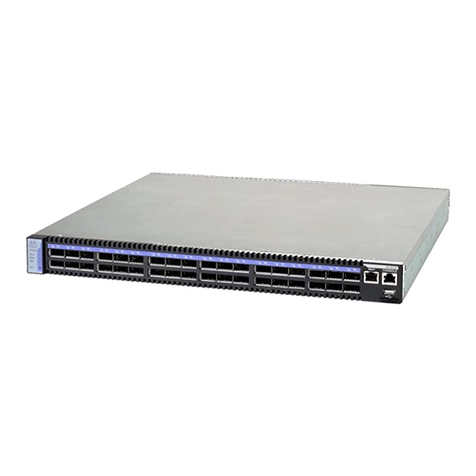
Mellanox Technologies
Mellanox Technologies MIS5025 installation guide
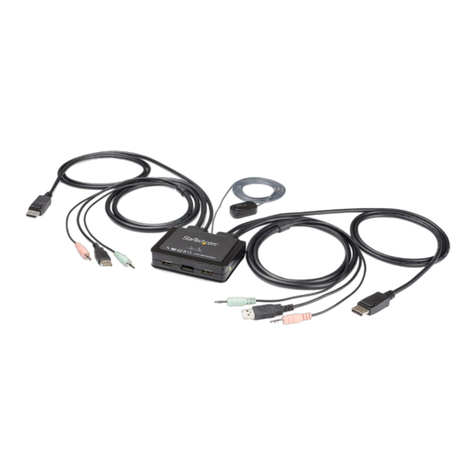
StarTech.com
StarTech.com SV211DPUA4K quick start guide
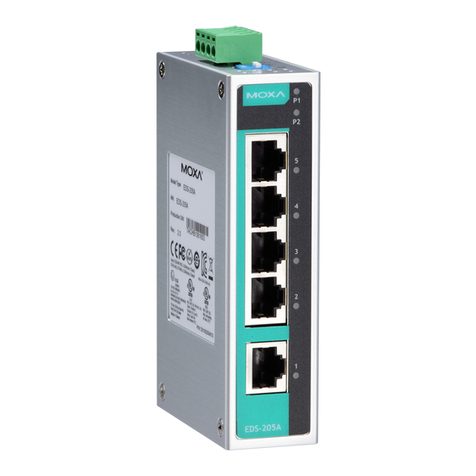
Moxa Technologies
Moxa Technologies EtherDevice EDS-205A series Hardware installation guide
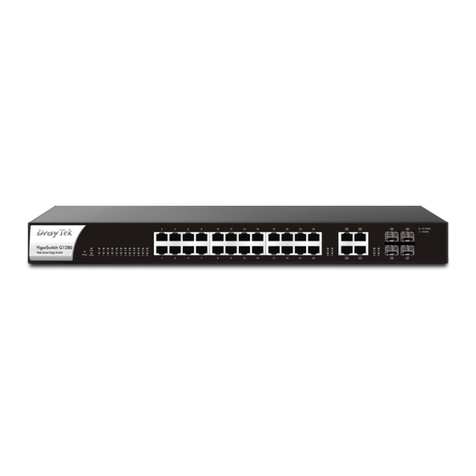
Draytek
Draytek VigorSwitch G1280 quick start guide

Huawei
Huawei CloudEngine 6850 Series Configuration guide
